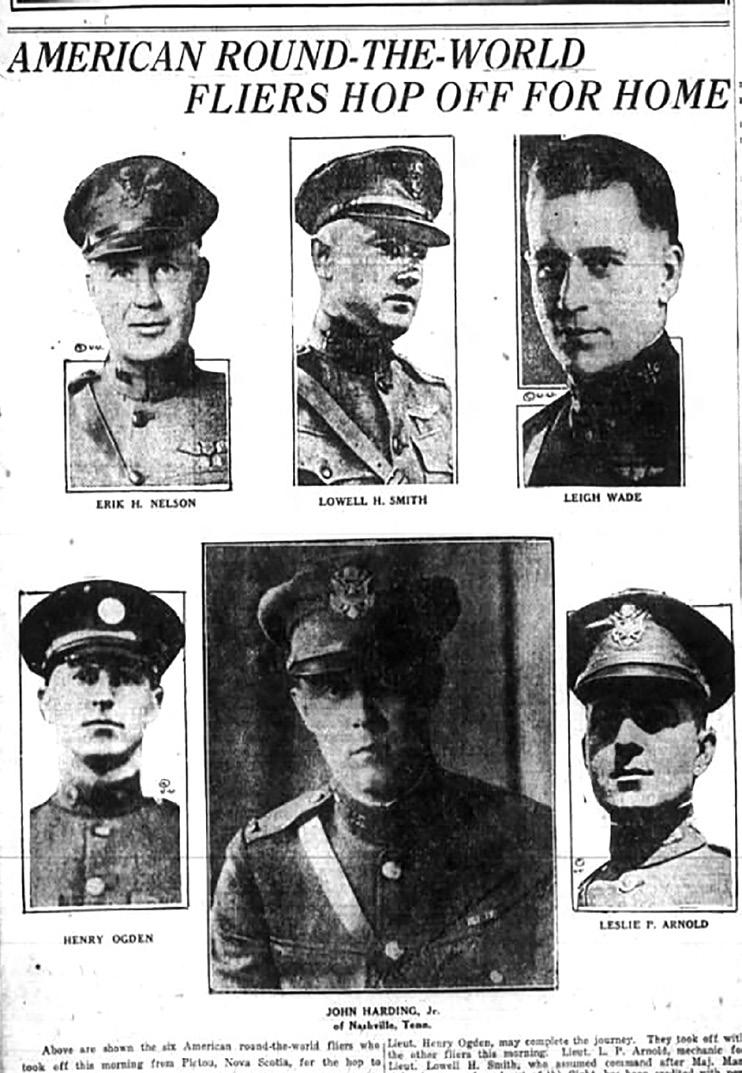
2 minute read
History Corner
First Flight Around the World
By Ridley Wills II
Many Nashvillians know about John Harding, the founder of Belle Meade Stud; of General William Giles Harding, his son and successor at the plantation; and of William Hicks Jackson, the Confederate cavalry general, who married General Harding’s daughter, Selene, after the war, and who ran the farm following his father-in-law’s stroke in the early 1880s.
Few people know about John Harding Jr., the son of William Giles, who was called “Smiling Jack.”
Harding was one of a small group of army aviators who made the first flight around the world. About dawn April 6, 1924, four army planes took off from Sand Point Flying Field, near Seattle. One of the planes, became an early casualty when it crashed on the Alaskan coast. It took the crew 10 days to reach civilization. A second, known as “The Boston,” came down in the North Atlantic while trying to reach Iceland. They were rescued by a navy cruiser.
The crew transferred to a new “Boston,” which came out from Nova Scotia and rejoined the two remaining planes for the final leg of the flight. The three planes completed the vast circuit in the teeth of Canadian blizzards, and Alaskan gales. While enroute, Harding mailed a postcard to his old prep school headmaster, Sawney Webb. It read: “Mr. Webb, I’m not driving a quarter horse. I’ve got one that takes the same gait all the time.”
From Alaska the three Douglas biplanes flew over Japan, China, India, across Europe, England, Iceland, Greenland and finally to Boston, where they were welcomed by President Calvin Coolidge. From there, they flew across the North American continent to the starting point, Seattle, which they reached Sept. 28, 1924, having flown a distance of 26,345 miles in 371 hours flying time, averaging about 75 miles per hour.
Those making the flight were Lieutenants Lowell Smith, flight commander, and Leslie Arnold in “The Chicago;” Lieutenants Eric Nelson and John Harding Jr. in the “New Orleans” and Lieutenants Leigh Wade and Henry Ogden in the two “Bostons.”The young flyers were hailed as national heroes, and the six were given distinguished service medals. John Harding Jr. was presented with a chest of silver by the City of Nashville as an expression of pride in his share of the great achievement. The presentation was made by Maj. E.B. Stahlman. Harding’s feat was also acclaimed in a resolution adopted by the state legislature. After his world flight, Harding went on a lecture tour with Lowell Thomas, and later founded an airline in Florida. He died in La Jolla, Calif., in 1968, 44 years after his historic flight.







